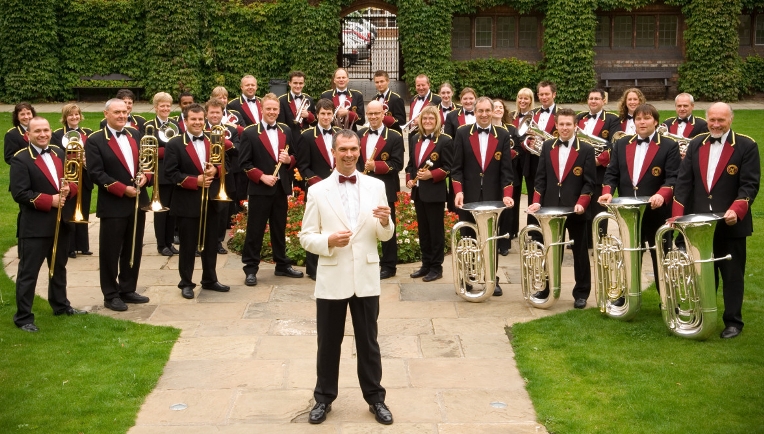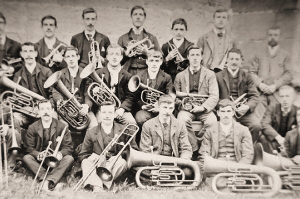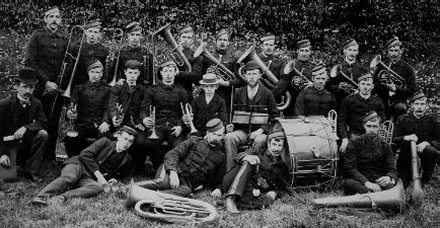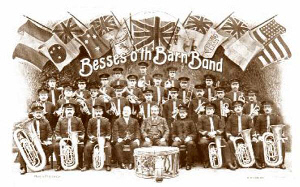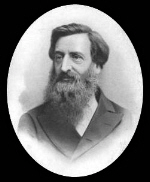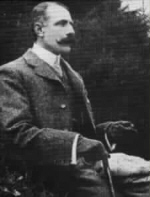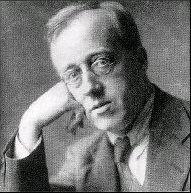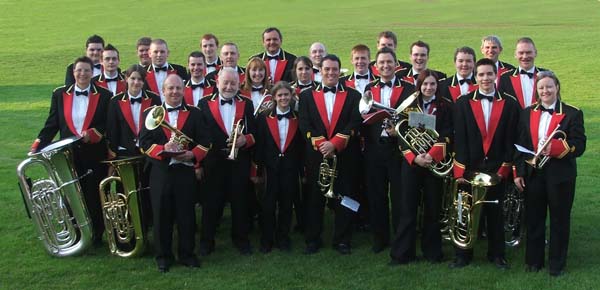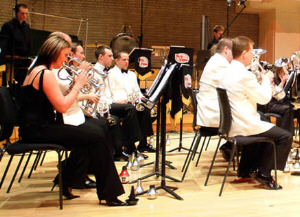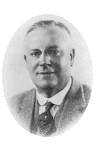7
|
|||||
The brass band is something of a social phenomenon, a brotherhood, part of the British way of life. Truly amateur bands are not merely haphazard groupings of players who happen to enjoy a "blow". They have a more serious purpose, part of which is to give opportunity for the unfolding of artistic skill and experience in those whose daily tasks are all too often monotonous and unsatisfying, although necessary. The brass band movement of the British Isles is a musical and cultural phenomenon somewhat unique in the history of bands. From its formative years in the early 19th century through its continual evolution, it remains an active entity today. The movement began as an effort to provide the working class, primarily in the northern industrial provinces of England, a social and cultural outlet. From humble beginnings today's ensembles boast highly skilled musicians of professional caliber. Through successive generations brass bands have promoted art music to the underclass of the British Isles with greater pervasiveness than perhaps any effort to date. However, despite the acceptance brass bands have enjoyed in certain social circles, they have not enjoyed the respect other music mediums take for granted. For example, in the first Grove's Dictionary of Music and Musicians, J. A. Kappey, an army bandmaster who had made no small profit from brass bands, wrote in the entry on Brass Bands that many "bands had reached a high state of excellence, but of course, looked upon as high art culture, brass bands are of no account."1 Considering the stature of Grove's in the music world this kind of statement could do nothing but drive a rift between elements in the music culture, as might indirectly be noted in the 1980 issue of Grove's. Trevor Herbert observed that the entry on the history of the triangle receives almost as much notice as the entry on brass band. And, while Grove's acknowledges the work of Johann Petzmayer, a 19th century zither player, Harry Mortimer, a most influential figure in 20th century brass bands, receives no entry at all--this coming from a British music publication no less.2 So the battle continues for both recognition and respect--a situation not all that uncommon in the band world. - Back to Top -THE FORMATIVE YEARSThe brass bands of the middle of the 19th century had their roots in three types of bands: military, church, and village. Military BandsMost military bands, originating in the late 18th century, were funded by direct patronage of the officers and were restricted to ten players. Militia bands, while considered less professional, were more flexible with six to twelve players involved. Besides drums, the most common instruments were trumpets, clarinets, fifes and flutes on treble parts, with horns, bassoons, serpents, and trombones on the lower parts. The repertoire consisted of a mixture of national and patriotic music as well as arrangements of popular art music. By the middle of the 19th century musicians from the military bands would influence the brass bands through the efforts of men such as composer Dan Godfrey. Godfrey had musical roots that dated back to the Band of the Coldstream Guards during the 18th century. Church BandsChurch bands of rural Britain were at their strongest between the years 1780-1830 and provided yet another tradition of amateur music performance. They were especially noteworthy for promoting music literacy. The most common instruments in church bands, however, were strings and woodwinds. Village BandsVillage bands performed at various social functions early in the 19th century. This type of ensemble provided an important base for the eventual establishment of the brass band. They appeared in the 1830's about the time the waits [see Ch. 1], who for centuries had been employed in cities throughout Britain, were formally disbanded. Even though waits traditionally were wind players, the timing of their dissolution appears to have had little or no direct influence upon the coming surge in popularity of the brass band. - Back to Top -ADOLPH SAX AND THE DISTIN FAMILYProfessor of OphicleidePrior to the invention of the saxhorn, bands relied on quickly outdated instruments such as the slide trumpet, keyed bugle, and the ophicleide. Although the tone quality and facility of these instruments, especially that of the keyed bugle, were inferior to those instruments soon to follow, occasionally their use was unnecessarily prolonged. For example, Sam Hughes was appointed professor as a specialist on the ophecleide at Kneller Hall in 1859 and at the Guildhall School of Music in 1880. His appointment at Kneller Hall corresponded with that of Alfred Phasey who was appointed professor of euphonium, the instrument that replaced the ophecleide in brass bands.1Among the circumstances which encouraged the popularity of brass playing were the vast improvements in instruments brought about by the invention of the valve by Stossell and Blumel and the patent of the saxhorn by Adolph Sax. Adding a valve mechanism to a horn provided brass players with instruments other than the trombone that could play chromatically. Also, the saxhorn afforded a family of brass instruments of like timbre suitable for playing in all registers, similar to a full complement of saxophones from soprano to bass. The growing popularity of brass instruments was aided by the endorsements of influential musicians such as the Distin family. This group of traveling musicians provided Adolph Sax with a ringing endorsement for his family of saxhorns. Prior to their 1844 encounter with Sax, the Distins made their reputation playing on slide trumpets, French Horns, keyed bugles and trombones. The Distins--John and his four sons--helped foster a new market for manufactured brass instruments and published music, primarily among the new and more affluent working class communities. In 1846 they became the British agent for Saxhorns--a short-term venture, as they began manufacturing their own instruments in 1850 after John's son Henry took over the family firm in 1849. There is speculation as to why the brass band became popular so quickly, to the neglect of military bands or orchestras. Several reasons are possible. One is that valved instruments were suitable for mass production at a relatively cheap price--something not possible on woodwinds and keyed brasses that relied on the traditional craft skills. Also, a three-valved instrument tends to be somewhat more "user friendly" as opposed to the initial intimidation that a keyed instrument can evoke. Plus, the ease with which it fits into one's hands makes it initially easier to hold, as opposed to a violin or flute for example.3 - Back to Top -MANUFACTURE AND SALES OF INSTRUMENTSWith the rapid growth of the brass band, manufacturing and retailing of brass instruments increased dramatically, representing both foreign and domestic sales. Firms such as Joseph Higham of Manchester, formed in 1842, advertised itself as "Makers to the Army". Under terms of the 1843 Design Act, numerous patents and registered improvements were filed through the course of the century. Much of this interest intensified with the 1851 Great Exhibition at which Sax won a "Council Medal". Henry Distin received 13 patents in design and manufacture, and a prize at the World Exhibition in Paris in 1867, before selling the firm to Boosey and Co. He eventually moved to the United States where he continued to manufacture brass instruments until his death in 1889. From the late 1850s the price of instruments continued to fall due to the removal of import tariffs, increased trade volume, and competition between manufacturers. By 1895 Besson employed 131 men in their London factory making 100 horns a week, producing 52,000 instruments between the years 1862 and 1895. Joseph Hingman employed 90 men who produced 60,000 instruments between 1842 and 1893.4 All this activity ran concurrent with considerable growth of music in general throughout Britain. It is estimated that from 1841 to 1891 the number of professional musicians and music teachers grew from 6,600 to 38,600. Concert attendance was increasingly broad-based, and listening to "serious" music was becoming a staple for more than the upper and middle class.5 One of the earliest brass bands was the Cyfarthfa Band founded in Merthyr Tydfil, South Wales, in 1838, by the industrialist Robert Thompson Crawshay. Merthyr was one of the world's largest centers for iron smelting, and in the 1830s was the recipient of large- scale immigration. Crawshay hired professionals for key positions in the band, then filled out the remaining positions with local talent. In addition to active employment in Crawshay's iron works the members probably received some compensation for their performance engagements. Other private bands were the Duke of Lancaster's Own Yeoman Cavalry Band with which Thomas Lee was associated (Lee was one of the earliest conductors of Besses o' th' Barn Band) and W. L. Marriner's band at Keighley in Yorkshire. Both the Cyfarthfa and Marriner bands participated in early contests. In 1837 Queen Victoria established a band of seventeen brass and woodwind players. These were key prototypes of the meritocracy industrial bands founded a decade later.6 - Back to Top -SOCIAL ATTITUDES TOWARDS BAND PERFORMANCEOne prevailing Victorian opinion held that participation in music was a socially acceptable activity. Music as an art form was considered a force for moral and positive good in society, and, somewhat as the classical Greeks had espoused when describing the effects of music played in certain modes, some believed different types of melodies could induce virtue. Such was the attitude of George Hogarth, who wrote in The Musical Herald in 1846: The tendency of music is to soften and purify the mind...the cultivation of a musical taste furnishes for the rich a refined and intellectual pursuit... a relaxation from toil more attractive than the haunts of intemperance [and in] densely populated manufacturing districts of Yorkshire, Lancashire and Derbyshire, music is cultivated among the working classes to an extent unparalleled in any other part of the kingdom...7 The acquisition of music skills was a source of pride for the working class, which had become increasingly self-conscious of its low social status. It also increased respect for the lower class in a society that had a high regard for artistic music and competent performance.8 - Back to Top -THREE TYPES OF BANDS EMERGEBrass bands enjoyed considerable growth during the 1850s, and while there was no set standard as to how bands were formed and sustained, three types can be identified. Patronage BandsFirst were the bands linked to a specific workplace or patron that was the significant benevolent source. Perhaps the most famous of the industrial patronage bands to be formed in the 1850s was one formed in the village of Queensbury in the West Riding of Yorkshire. John Foster, an amateur French horn player in the early part of the century, established a cotton mill on a stretch of land known as "Black Dyke". He established a brass band with what little was left of a village band, and provided instruments, a practice room, and uniforms, stipulating that it ever be known as the Black Dyke Mills Band. This was only one of several projects Foster undertook to expand the cultural base in the community around his mill--projects which included a school, a library, and a modestly ornate "Victoria Hall". Little is known about any continuous musical activity in the village band that preceded the formation of the brass band, but soon after the advent of this famous ensemble they were playing transcriptions of Italian opera at major contests. Foster could never have imagined that one day his band would be more famous than the textiles manufactured in his mill.9 Subscription BandsSecond were the subscription bands whose support was engendered by a wider community such as mechanics' institutes or temperance societies. Interest in such ensembles often was the result of efforts as simple as posting a notice announcing a public meeting to encourage the formation of a saxhorn band. The line of separation between these two types was often blurred in some instances since a band, sometimes identified with the name of a mill or factory, did not necessarily owe its origins to the owner. In fact, direct owner patronage was a factor in only a small percentage of bands, while a higher percentage of bands depended upon wealthy middle-class subscribers. Volunteer BandsThe third type were those bands formed by the 1859 volunteer movement. Some volunteer bands received subscription money while others were funded by middle-class patronage.10 The volunteer movement was the result of international tension. During the 19th century Franco-British relations were seldom at ease. In 1859, fearing the threat of invasion, Secretary of War Jonathan Peel sent a circular letter to the Lords-Lieutenant of all counties instructing them to form a force of volunteers to be drilled and instructed in case of invasive war. These volunteers, though exempted from the militia ballot nevertheless were required to attend twenty-four drills per year. From the outset, bands were considered to be of practical use at drills as well as for adding a touch of ceremony during annual reviews. The band also served as a liaison between the volunteer corps and local communities. While no government money was set aside to fund bands specifically, money was frequently secreted from the funds to keep such an entity afloat. As the practice became more expensive, this poorly kept secret drew heavy criticism as an inappropriate use of funds, suggesting the bands continue through efforts of private subscription by requiring an annual fee of all officers and/or by playing fundraising concerts. A number of volunteer bands also were merely established civilian bands in disguise, so to speak. The W. L. Marriner band also served as the Band of the 35th Rifle Volunteer Corps. The 1st West Yorkshire Volunteer Fire Brigade Guards was known a year earlier as the Flush Mills Band from Keckmondwike.11 - Back to Top -STARTING A BANDEven with more affordable instruments it still was no small matter to outfit an entire band from scratch, especially if the band had no patron. In addition to the cost of instruments there was also the expense of heating and lighting a rehearsal room, and of providing uniforms, a salary for the leader, and music. Bands raised money through personal subscription of their members and through playing concerts and athletic events. The best bands could also rely on using the winnings from the various contests they entered. During the first thirty years of its existence Besses o' th' Barn won prizes totaling 3,359 pounds and 17 shillings. While smaller contests paid between 5 and 7 pounds, larger contests such as Belle Vue paid substantially more. For example, in 1887 the Kingston Mills Band received a cash prize of 30 pounds, a euphonium valued at 30 pounds, and gold medals for each member collectively totaling 78 pounds and 15 shillings.12 As bands came under contract to pay off debts for expenses, it was paramount that they maintain a high level of discipline so as to be successful. Written agreements between a band and its players became necessary to ensure proper use of all money acquired, as well as to establish rules of conduct to handle disciplinary action, whether it be provoked by misconduct or by not playing up to the standards of the ensemble. While the democratic process was implemented to safeguard major abuse, most conductors were given musical authority over each band. - Back to Top -THE SALVATION ARMY BANDAs mentioned earlier, the brass band was considered a socially advantageous activity. This was so, if for no other reason but that it gave the working class less time to spend in public houses and other activities of corruption. Abstinence groups became influential in promoting bands, and several bands can trace their beginning to such efforts. The Bramley Band, with a pledge to total abstinence in 1836, may have been the first temperance band. It was in the Salvation Army, however, that the bands became so prominent as to affect the very nature of the organization for which they were founded. A builder and Wesleyan named Charles Fry formed the first Salvation Army band in 1878. The ensemble was a quartet made up of Fry and his three sons. The idea quickly spread so that by 1883 the Salvation War claimed: the formation of hundreds of brass or other bands with over 5,000 instruments during this year is an event which must needs leave its influence on the future musical history of the country. The playing of these bands has been made a great ground of complaint against us everywhere but so far from there being any sign of them being objectionable, this is one of the surest evidences of their virtues.13 General William Booth was not unaware of the dangers of allowing open membership into these bands, a situation which would potentially cause the various bands to be Salvationist in name only, as had already happened to many of the temperance bands which were not true to their original calling. He set directives in motion early in 1881, which separated the Salvationist bands from those of the contest movement for more than a hundred years. Among these was the directive requiring all members of the bands to be active members of the Salvation Army. In 1883 Booth set up the Salvation Army Music Department, followed a year later with the first issue of The Salvation Army Brass Band Journal. In 1885, Bramwell Booth, the Chief of Staff, issued directives allowing no other music than that found in the Salvation Army General Band Book, and in 1889 directives also included the manufacture, sale and repair of musical instruments.14 While steps to keep Salvationist brass bands separate from the brass band movement were remarkably successful, nevertheless, some players participated in contest bands on their own. On the other hand, the Salvationist movement provided an opportunity rarely afforded in the other bands--the encouragement and active recruitment of women to play in their ensembles. - Back to Top -19th-CENTURY BRASS BAND MUSICMuch of the music employed by the 19th century bands came through the printing of brass band journals by various publishers beginning in the 1840's. Journals varied in price from 1 to 2 shillings per month. Most likely Wessel & Co published the first regular subscription journal. These journals were sheet music publications with no text. Bands would receive up to twelve publications a year. The works were flexible in nature with alternate parts provided to facilitate a diversity of instrumentation. The earlier music consisted of both light selections and art music, turning mostly to opera arrangements by the 1860's. The suggested instrumentation of the Distin Journal, published by Boosey from 1869, was: FOR A BAND OF TEN. - 1st Cornet in B flat; 2nd ditto; 1st Cornet in E flat; 1st and 2nd Tenors in E flat; Euphonium; Bombardon; Side and Bass Drums. The Euphonium and Bombardon parts may be had in either the Treble or Bass Clef. Subscription: Ten shillings and Sixpence per Annum for Ten Performers (Postage Free in the United Kingdom), payable in advance. Price to Non-Subscribers: One Shilling each Number. This Journal is arranged to suit a Band of any size, and extra Parts may be had for the following Instruments: repiano Cornet in B flat; Cornets, 3rd and 4th, in B flat; Solo Tenor in E flat; 2nd Baritone in B flat; 1st and 2nd Trombones in B flat (either in the Treble or Bass clef); Bass Trombone; and Contra-Bass in B flat. Price of extra or duplicate Parts Twopence each, or to Subscribers Three Halfpence.15 There was also considerable trade in solo and ensemble music for brass players, primarily in the form of arrangements of opera arias or other such as Distin's Selection of the most Favourite Swedish melodies as sung by Md. Jenny Lind for cornet-á-pistons, saxhorn or tuba with pianoforte accompaniment.16 Some of the best sources of information concerning the activities of individual bands are the manuscript part books written for a particular ensemble. Whereas the journals published music in a pervasive manner for all to use, manuscript books not only indicate the specific repertoire of a band, but also provide insight as to the technical ability of its players. After all, a good bandmaster would write music to fit the abilities of his own personnel. As to the type of pieces performed, the surviving copies of the Black Dyke Mills Band suggest a repertoire of dances (quadrilles, polkas and waltzes) and Italian opera transcriptions, while the repertoire of the Goose Eye Band emphasized light music--dances, song arrangements with a few arias, and chorus arrangements of art music.17 The largest surviving collection is by the Cyfarthfa Band of South Wales with six sets totaling 105 part books. The music books date back to the 1850s and contain the largest sample of surviving Victorian brass band music. The music falls into three groups--dance music (quadrilles, polkas and waltzes are the most popular), transcriptions of art music (the most popular source was Italian opera), and miscellaneous religious and secular pieces that were of local interest (Welsh airs, etc.)18 By the end of the 19th century, while bands of various sizes still existed, the instrumentation of brass bands increasingly reflected that of contemporary concert bands. With the arrival of contests, bands not only had the opportunity to hear other ensembles, but contest rules and the music performed demanded an increasing stability in instrumentation. This certainly became a requirement with the performance of the test piece. Publishers observed the instrumentation of the more successful Northern bands, and adopted their format when publishing their music. - Back to Top -THE CALL FOR ORIGINAL MUSICDuring the Victorian age the brass band movement never inspired original music of any lasting merit. Conversely, the brass band had provided tens of thousands of working class people exposure to "classical" music, by performing transcriptions of the original music. This in itself was no small achievement. Audiences had heard selections from the great operas, and transcriptions of complete Haydn, Mozart, and Beethoven symphonies--performances requiring considerable stamina on the part of the players. Virtuoso performers from these bands were of the same social class as the audiences. From this familiarity many of these performers became musical heroes in their own right as they represented the best in working class achievement and potential. Not only did they receive press in brass band publications, some acquired principal positions in the leading professional orchestras of Britain. On the other hand, contesting, which in so many ways was the heart and soul of the brass band, hindered the further development of the movement. On the plus side, contests had raised the standards of bands pursuing musical and technical excellence. But this inevitably led to the creation of a musical stereotype as to playing style, virtuosity, and orthodoxy--musical and social--possibly causing some composers to approach brass bands with reluctance. Trevor Herbert notes that "the notion of contesting as a raison d'être for brass bands, implying as it does a set of criteria that can be weighed up, measured and scored, is an anathema to basic principles of high art."19 Contest scores and the ensuing friction between rival bands did little to perpetuate the "lofty" ideals of banding, or to put brass bands in comparable light with orchestras which were traditionally above that sort of thing. The twentieth century renaissance of English music, coupled with the efforts of a few enlightened patrons, changed all the aforementioned. Beginning in the 1920s and 1930s the elite of the English composers were commissioned to write test pieces for contests. As in earlier years these works were designed to fit certain contest criteria, and would be performed by all entering bands. Most early test pieces were arrangements, initially emphasizing Italian opera, but selections from musical comedy such as Gilbert and Sullivan were also popular. It was in 1913 that J. H. Iles used Percy Fletcher's Labour and Love as the test piece for the Nationals. Whether Fletcher could be considered the first serious composer to write for the brass band is debatable, as he was known more as a theater conductor and composer of popular music. But from then on the test piece more often than not would be an original composition instead of a transcription or an arrangement. It is fitting that Gustav Holst wrote the early standard for original repertoire. Moorside Suite (1928) became for the brass band movement what the First Suite in E-flat was for the military band. Written in three movements, the suite explores the extremes of mood, dynamics, flexibility, and colors of which the brass band is capable. The third movement, March, is often performed separately. Other commissioned works from this period include Downland Suite (1932) and "Comedy" Overture (1933) by John Ireland, The Severn Suite, Op. 87 (1930) by Sir Edward Elgar, and Kenilworth (1936) by Sir Arthur Bliss. Test pieces and other compositions have offered new and varied literature, much of which takes the brass band to the extremes of tonality and technique. A small sample of the literature of more recent years includes:
The popularity of these pieces is evident by the number of works transcribed for military band such as the Little Suite, Prelude for an Occasion, Moorside Suite, and Year of the Dragon. While works composed by first-rate composers such as Elgar and Holst were certainly a boost to the movement, most composers of notoriety were not inclined to submit more than one effort to the repertoire. This has changed somewhat in more recent years as composers such as Philip Sparke and Edward Gregson, and even composers outside Britain such as James Curnow, have written several selections for the medium. This younger generation of composers has endeavored to compose in a style more suited to the compositional techniques and timbres of other 20th century media. One factor that has aided the trend has been the introduction of percussion. For many years percussion was forbidden in contests so as not to cover up weak playing. By 1976 bands in all sections of the Nationals were allowed to appear with percussion, paving the way for such pieces as Gregson's Connotations and Bourgeois' s Blitz. - Back to Top -THE 20th-CENTURY BRASS BAND MOVEMENTNumber of BandsDetermining the number of bands in existence at any one time, especially in the 19th century, is a difficult task. The band music publishers Wright and Round estimated the number between 30,000 and 40,000 in 1889, while estimates in 1913 in the British Bandsman, with some other calculations, suggested a figure closer to a minimum of 2,600 for England, Wales, and Scotland. Somewhere in between lies the truth. While acknowledging that the early figure was highly inflated, it was obvious that the number of bands began to fall off after having reached a peak towards the end of the 19th century. The number declined during World War I, but remained somewhat steady during the inter-war period, suffering only slight decline. From 1937 rapid decline set in until the beginning of the Second World War. Decline reappeared during the 1950s and 1960s, until the number of bands reached less than half the number recorded in 1913.20 In addition to the upheaval that wartime exacted on the movement, another reason for the decline in numbers of bands was the changes in demographics. As various mining and industrial centers declined over time, declines in population and income had obvious catastrophic results on the success of bands in those communities. For example, the number of miners employed in Durham in 1923 was listed at 170,000. This number had decreased to 34,000 by 1970, with 75 mining pits closing in the 1960s.21 Another factor was the onslaught of the electronic age. Much as the cinema was a factor in the abrupt termination of most American professional bands, it was also a factor in the entertainment tastes of Britain. The radio and gramophone made it possible for the public to hear art music or the "classics" in original rather than adapted form, thus eliminating the 19th century analogy of the brass band as the working man's window to the classics. Also, football leagues and activities such as Scouts competed for the time of young men who otherwise might have been training for band membership. - Back to Top -Public Perception of BandsBands fought an uphill battle to gain respect in the public at large. Ignorance on the part of the media and cultural elite sometimes resulted in ill-informed and inaccurate statements. Perhaps the most infamous was made by Sir Thomas Beecham when he referred to the brass band as "that superannuated, obsolete, beastly, disgusting, horrid method of making music." Furious attacks on Beecham filled band press for weeks. Through greater press coverage, recordings and broadcasts, by the 1940s the media could no longer claim such ignorance. Even Beecham guest conducted a mass band concert at Belle Vue, February 1947.22 Once elite bands from the heartland stepped out of their area, they also were subject to some cultural ignorance of the specialized music they played. This led to special interest stories that did not always put the bands in the best public light. Cliches such as pictures of a young player playing the largest horn or conducting the group were common, as were humorist anecdotes concerning the judges' box and the long periods of time in which the judge stayed in said box. One outgrowth of this was a TV play in 1963 which portrayed a double-B-flat bass player named Ernie Briggs who preferred his band activities to married life. With the media increasingly concerned with international events, the brass band was deemed by some as decidedly parochial.23 Occasionally the press could be complimentary of bands. A Daily Herald item of 1947 noted that during a chronic fuel shortage the musicians of the miners' bands worked a double shift before leaving to play at the Nationals so as to avoid a drop of production in their absence.24 Also, anyone aware of the movement would acknowledge the great strides in performance ability that have occurred over time. Contemporary recordings of the top-flight bands display a remarkable level of musicianship. - Back to Top -Acceptance of WomenThe 1930s saw the integration of women into the bands as regular members, and with the loss of men to the war effort, even more women were encouraged to fill the ranks, although they were never seen in great numbers. This came at a time when bands were having recruitment problems, so, in a sense, their acceptance paralleled a time when bands were not enjoying the popularity of earlier years. Women's admittance into the elite contesting bands met with resistance, since there was an abundance of male personnel eager to take a seat in these organizations.25 Social Change and Band LiteratureBrass Bands enjoyed a great sense of loyalty and connectedness within their ranks. Whether it was the common bond of music making, or community spirit, a sense of "family" was prevalent. The inevitable feeling of tradition in the movement was in time both a blessing and a curse. Traditions always foster a certain loyalty. In this case it resisted the opportunity for reform in areas such as instrumentation and repertoire, reducing the place brass bands had enjoyed in the popular music culture. From the 1920s new styles, particularly American music, demanded a greater portion of the public's interest. Beginning with dance bands, the public eventually embraced jazz, rock and roll, and whatever new forms an increasingly shrinking world adopted. Some bands willingly embraced audiences in new venues. Black Dyke made recordings as early as 1903, and other leading bands also became regular recording artists. There were also recording opportunities for cornet soloists such as Harry Mortimer, Jack Mackintosh, and Owen Bottomley. Broadcasts of concerts on the BBC are a staple for audiences even to today, though the highest profile came during Harry Mortimer's sojourn as the Corporation's brass and military band supervisor from 1942 to 1964.26 - Back to Top -THE D EVELOPMENT OF CONTESTS AND FESTIVALSLike anything else, contests in the brass band movement did not just appear out of a social vacuum. Contests for bell-ringers had been held for a hundred years prior to the establishment of brass contests. It would seem natural for bellringers who were also brass players to want to try their skills in a similar venue. While travel was held to a minimum for those involved in bell-ringing contests, with the rapid development of the rail system in the 1840s travel for brass bands became more far-reaching. Contests also served to raise the standards of band performance. Competitions allowed bands to compare their efforts to other competing bands, much to the humiliation of some, especially those entering a contest for the first time. Early YearsThe Burton Constable ContestThe idea for the band competition at Burton Constable actually came from friends of the Constables who helped plan the charitable event. the "Ladies Chichester" had witnessed similar competitions in the south of France during their travels, and thought it would be a high point of all the various activities carrying on that day. The Wold Band conducted by James Walker of York won the much-anticipated event. Their rendition of the "Hallelujah Chorus" from Handel's Messiah was reputed by an observing musician to be the finest performance they had ever heard of their deeply loved chorus. First prize was twelve pounds.2The first such event fully chronicled was in 1845 and held eight miles from Hull in the Burton Constable. Sir Clifford and Lady Constable sponsored several rustic celebrations followed by an afternoon of rivalry between bands organized the event. Bands were limited to twelve players. Other requirements in later years were (1) the judge was hidden from sight of the bands, (2) bands drew for playing position, and (3) no percussion was allowed (a rule enforced for the next 130 years). How many contests were held prior to this event is not known.27 The first brass band contest was held in 1853 at Belle Vue, a zoological garden and entertainment complex located in the Manchester suburb of Gordon. The eight participants were required to play two selections of their choice, and the winner was the Mossley Temperance Band led by William Taylor. There were reported to be 16,000 people in attendance, which would suggest a substantial profit not only for the organizers but also for the rail companies persuaded to run special trains to transport large numbers of spectators to and from major contests such as this. In 1854 there were 20,000 spectators, and the following year a test piece was required.28 In time, new rules defined the contest format even more narrowly. By 1871 Belle Vue required the name and address of each participant submitted one month early so as to eliminate players participating with more than one band. By 1889 other stipulations included banning professional players, and prohibiting the performance of the test piece in public the day before a contest. Conductors, who were sometimes professional, could direct more than one group but were not permitted to play. In 1873, due to Phineas Bower of Black Dyke winning both the euphonium and trombone instrumental prize on valved instruments, a new rule stipulated the use of only slide trombones.29 Banding was at its peak from the twilight of the 19th century up until the First World War. Contest activity among the best bands was intense as a number of bands entered contests quite frequently. The Leeds City Band won the most contests for the 1896-7 season with ten firsts, seven seconds, one fourth and one fifth. Also, some bands would divide into smaller units and competed against themselves, and, until the end of the century, brass bands and military bands competed in the same class at many contests.30 - Back to Top -The National Brass Band ChampionshipSullivan and the Brass BandsWithout the support of Sir Arthur Sullivan, the National Brass Band Championship might never have happened. As director of the Crystal Palace Company his influence paved the way for the venue to be held at the Crystal Palace. He also provided the championship trophy from a most elaborate and expensive trophy that had been in storage at the Crystal Palace for some number of years. Because of his support of the first contest Henry Iles insisted that the test piece be arranged from selections of Sullivan's music. Not only was Sullivan pleased with this gracious offer, he also agreed to conduct the mass band during the concert held at the conclusion of the contest. Being able to advertise Sullivan's participation certainly didn't hurt ticket sales, either.3In 1900 John Henry Iles promoted the first National Brass Band Championship at the Crystal Palace in Sydenham. Iles was a recent convert to brass bands, who two years earlier had bought both The British Bandsman and the publishing company R. Smith & Co. Ltd. With the support of Sir Arthur Sullivan, the attempt to make this the national base for contests proved successful. At the first event twenty-nine bands competed in three sections. The contest piece for the championship section was Gems from Sullivan's Operas No. 1 arranged by J. Ord Hume and the winner from the championship section was the Denton Original Band, conducted by Alexander Owen.31 To this day, the importance of contests has remained paramount to the movement. As the number of bands has declined the movement has taken refuge in the importance of these events. The major contests were opportunities to introduce new repertoire that potentially could raise the standards and respect in which the movement was viewed in the music culture. The contest was important financially not only for the players who won such events but also for tradesman selling wares both musical and non-musical. J. H. Iles, who controlled the National, took charge of the Open (Belle Vue) in 1925. These two events were vehicles to publicize his other financial ventures, Richard Smith Co. and the British Bandsman. For the players, contesting allowed for an exciting cultural event, travel, and for the younger players, a chance to broaden their social, cultural, and musical world. At the National, the main competitions were always followed by a concert, and the battle for seats was intense. Winning at the main contests has traditionally been a source of civic pride. Into the early 1950s it was still customary to have crowds of welcome at the train station followed by speeches and celebratory dinners to welcome the winners.32 In 1945, due to Iles's financial situation, the newspaper Daily Herald took over sponsorship of the National Brass Band Festival, with Edwin Vaughan Morris in charge. By 1946 a series of regional qualifying events were necessary to narrow the field of participants at the National. The British Isles were divided into eight regions in which bands were divided into four sections for competition. The top two finishing in each section then competed in the National finals. Vaughan Morris retained his position even as sponsorship transferred to another paper, The People, and eventually gained full control until retirement in 1971. In 1969, after observing an increase in the number of continental brass bands, Vaughan Morris established a world championship. This was still only a regional event, since only one Dutch band was asked to join the Nationals. The next year a Danish band joined the mix. Given the interest of bands in New Zealand and Australia, it is surprising that the concept of world championships had not been adopted earlier, especially since the Newcastle Steel Works Band from Australia came in third at Crystal Palace and first at Belle Vue in 1924, and the Open National Championship of 1953 was won by the National Band of New Zealand. Instead of having the world championship, the European Brass Band Championship was established in 1978, and has continued to be successful, admitting bands from several countries.33 While the total number of bands has decreased in recent years, the number of contests has remained high, with The Rakeway Brass Band Yearbook of 1987 listing 232 contests in the year to August 1986. This amounts to 8.62 bands per contest, far higher than a century earlier. The movement has evolved from a general entertainment for the public at large to somewhat of a cult following for those particularly knowledgeable of the repertoire and the style of music brass bands play--not unlike the following drum and bugle corps enjoy in the United States. Radio stations have instituted regional contests and the BBC initiated a contest called BBC Radio Band of the Year, which is decided on tapes of the year's Bandstand programs. This allows the criteria to incorporate aspects of musicianship, programming, and entertainment in the judging process. Other promoters have been from disparate backgrounds such as holiday camps, local authorities, festival committees, and the National Union of Mineworkers, to name a few.34 CONCLUSIONThe British brass band is still a popular and identifiable component of the music scene in England. The style of playing and music performed has created interest in brass band performance in other parts of the world as well, including North America. - Back to Top -
|
|||||
